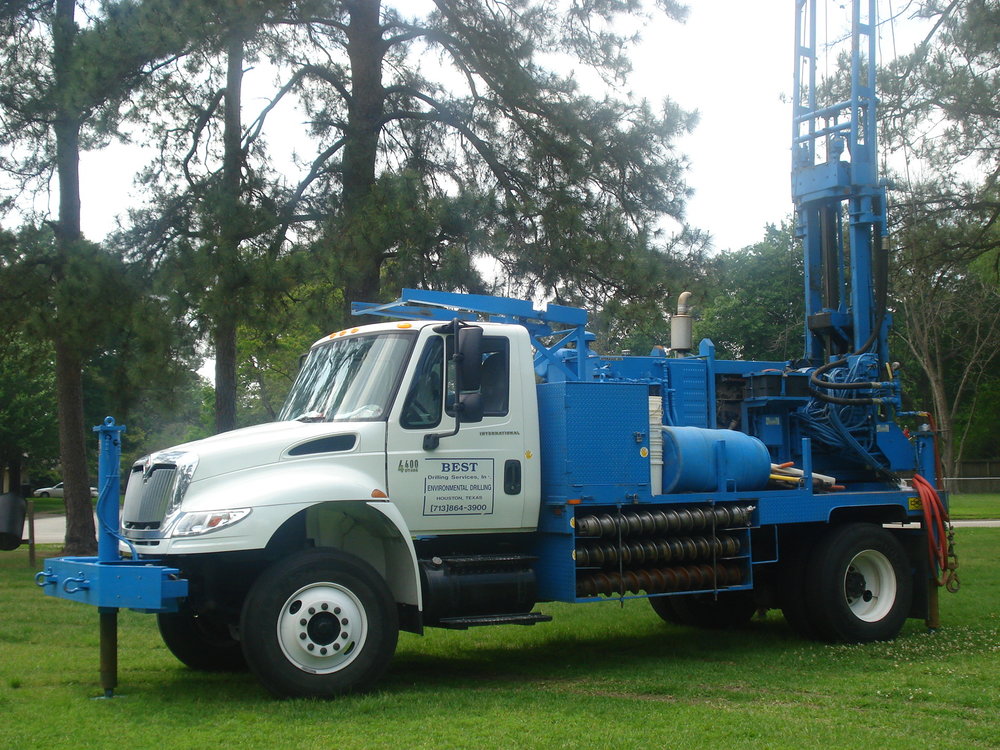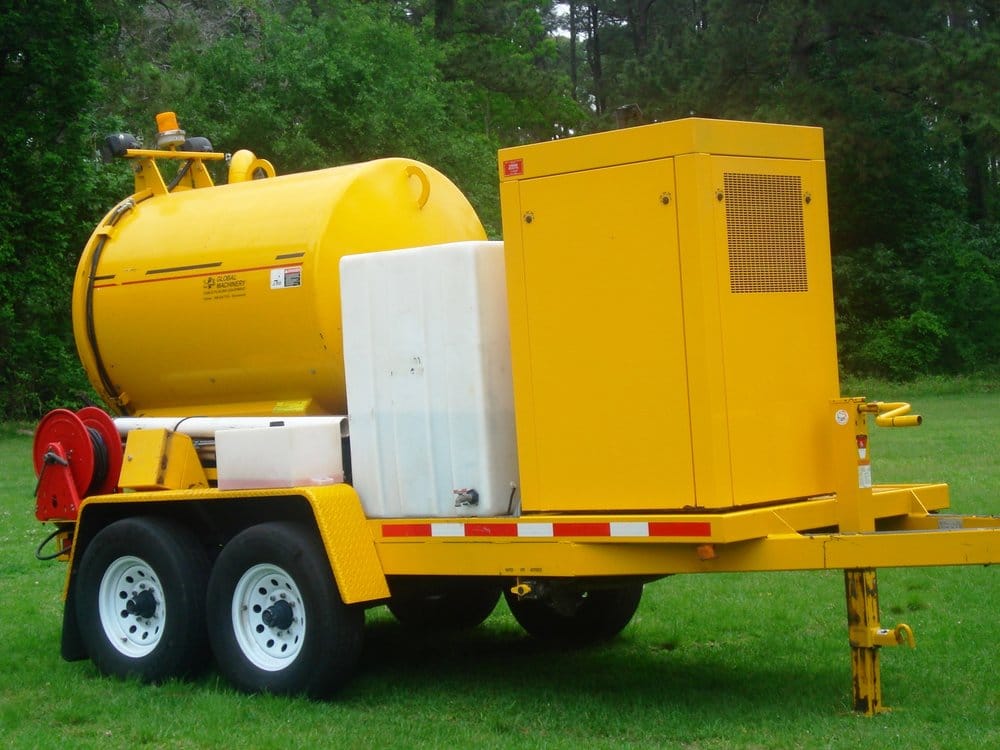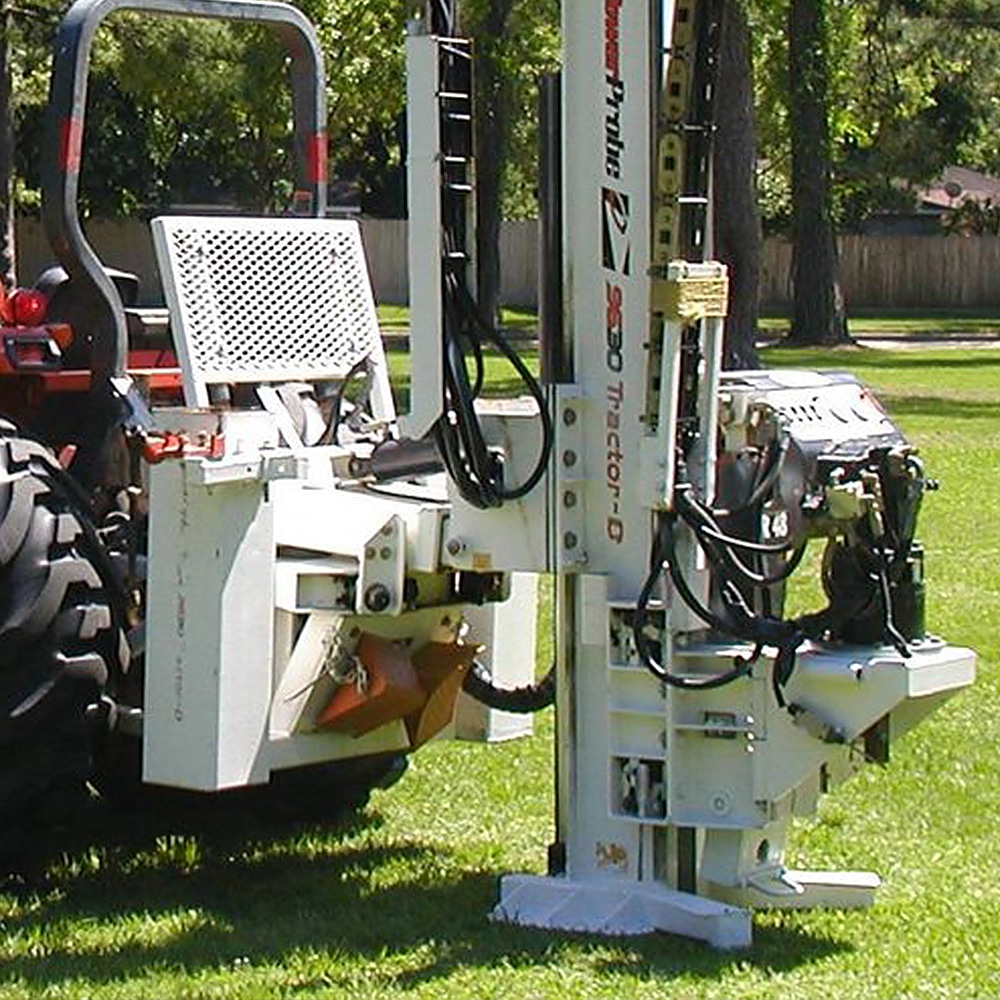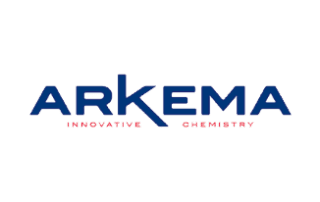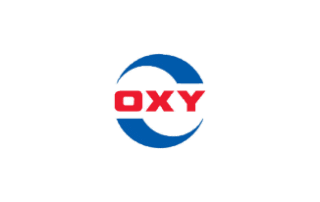Have A Project We Can Help With?
Modern Environmental Drilling Services
Best Drilling Services (BDS), Inc. is an environmental drilling firm with capabilities of accomplishing a wide range of drilling services.
BDS was established in 1990 and is licensed to install wells in Texas, Louisiana and Oklahoma.
Our drilling projects are preformed by experienced, licensed drillers.
Safety First
Safety is the most important aspect of our daily operations and it is our company’s core value.
Best Drilling’s management and staff have been successful towards a goal of zero injuries. There has not been any recordable injuries or lost work for the last 16 years with over a million hours worked.
Everybody at Best Drilling is a safety manager and we still work diligently to improve safety by educating our staff and by operating the most up to date and well maintained drilling equipment.
All Best Drilling personnel are trained in the following:
- 40 hour OSHA Hazwoper, Annual 8-Hour Refresher
- Loss Prevention System (LPS) & Annual LPS Refresher
- Basic Plus, Respiratory Fit Testing & Site Specific for refineries in Texas and Louisiana
- American Petroleum Institute (API) Training
- Shell 12 Lifesavings Rules
- Job Safety Analysis (JSA) – Best has developed JSA’s for all our daily tasks. These JSA’s are updated & revised regularly.
- Best is a member of ISNetworld, PICS (Avetta), DISA Global Solutions, Inc. & Houston Business Round Table
All projects, regardless of the size, receive the same professional attention and quality workmanship. Projects are completed safely & efficiently.
We have built a reputation based on our dedication to safety, quality, reliability, competitive fees. and strongly adhere to our tradition of complete client satisfaction.
Best Drilling Services. Inc. can provide payment and performance bonds for projects up to 2.5 million dollars.
We Are An Equal Opportunity Employer
Direct Push Technology (GeoProbe DPT)
- Soil Sampling
- Groundwater Sampling
- Vapor Sampling
- Hollow Stem Auger
- Well Installation
- Chemical Injection
Direct Push machines “push” tools and sensors into the ground without the use of drilling to remove soil to make a path for the tool. A Geoprobe direct push machine relies on a relatively small amount of static (vehicle) weight combined with percussion as the energy for advancement of a tool string. Probing tools do not remove cuttings from the probe hole but depend on compression of soil or rearrangement of soil particles to permit advancement of the tool string.
Soil probing equipment is typically used for site investigations to depths of 30 to 60 feet (9 to 18 m) depending upon soil conditions. However, this range is elusive and constantly increasing as better probing equipment is produced. Geoprobe soil probing equipment has been used to depths exceeding 100 feet (30 m) in many areas of the United States and overseas.
- It’s hydraulically powered either from a vehicle or an auxiliary engine.
- It uses static force and the dynamic percussion force of the GH40, GH60 or GH80 Soil Probing Hammer to advance small diameter sampling tools.
- It rearranges particles in the subsurface by application of weight and percussion to advance a tool string and produces no cuttings in the process.
- It can drill through surface pavements 12 inches (305 mm) or more in thickness and probes beneath them.
- It can be used for collecting soil cores, groundwater samples, and soil gas samples. A probing tool is also available to make continuous log of soil conductivity and probe penetration rates.
Benefits:
- Streamline subsurface investigations
- Need for fewer permanent monitor wells
- Provide quick, multiple media and multiple depth sampling
- Lessen investigation derived waste (IDW) disposal headaches
- Acquire in situ chemical and physical data
- Use of less visually obtrusive equipment
- Minimal physical and chemical disturbance of the sample media
- High degree of sample integrity
DPT can be used to perform soil, groundwater and soil vapor sampling. They can also be used to drill 1″ PVC Temporary Wells, allowing for groundwater measurement and sampling and even the installation of monitor wells by hollow stem augers. Direct Push Tech can also be used for subsurface chemical injection.
WHEN TO CHOOSE DPT
- SMALL FOOTPRINT & LOW CLEARANCE Direct push is ideal for smaller sites because it requires less space for operation and drills smaller holes.
- PRODUCTIVITY In the right soil type, direct push can quickly produce a large number of high-quality samples, generally up to 200 feet per day.
- WASTE MINIMIZATION Direct push produces minimal investigation derived waste (IDW) because it does not require the continuous removal of drill cuttings to clear the hole, or additional fluids for cooling and lubrication.
SOIL SAMPLING
Soils samples can be collected in 4′ or 5′ Acetate liners, brass, or stainless steel liners, depending on project requirements. These liners can be capped and sent to a laboratory for analysis.
GROUNDWATER SAMPLING
Groundwater samples can be collected utilizing Temporary small diameter wells (1″), groundwater samplers (Hydropunch), peristaltic pumps, tubing, and mini bailers. The method to be chosen for groundwater collection depends on the depth required and client’s preference.
DUAL TUBE SOIL VAPOR SAMPLING
The Geoprobe Post Run Tubing (PRT) system can be used for soil-vapor collection. This system utilizes a three-way valve connected to the tubing: one running from the bottom of the boring, one to the purging pump and another to the sampling container, for an undisturbed soil vapor sample.
CHEMICAL INJECTION
DPT can be used for chemical injection by utilizing injection points and rods to inject chemicals into the formation.
Hydroexcavation
- Air Excavation
- Animal Waste Cleanup
- Car Wash Pit Cleaning
- Cemetery Headstone Resetting
- Foundation Stabilization
- Hurricane Cleanup
- Industrial Plant Cleanup Applications
- Locating Underground Utility Lines
- Manhole Cleanup and Maintenance
- Pond Cleanup
- Toxic and Non-Toxic Spill Cleanup
- Vacuum Excavation
- Wet / Dry Material Removal
Vac-Tron Industrial Vacuum Equipment can efficiently remove hazardous material as a result of toxic and non-toxic spills, easily removing both wet and dry material from a contaminated environment.
The Vac-Tron Air 573/873 & 1273 SDT have an attached air compressor with air flow: 150 cfm; air pressure: 170 psi; air hose length 50’ and 1” diameter. Vac-Tron’s AIR Series also can be purchased with the patented Remote Debris Tank which is designed for dry potholing. The remote debris tank allows the operator to collect the dry material and when the pothole is complete, the tank can be positioned over the hole and the dry material is dumped back in the hole.
Air Excavation Procedure Overview
- Confirm the crew has safety gear on and the area is prepared for digging
- Begin initial break up of soil (dirt, clay, other materials) with air pressure
- Start digging with vacuum and remove soil as the air pressure continues to loosen soil
- Check status of hole and utilities exposed, identify
- Excavated soil is returned from excavator storage tanks for minimal disruption
Air Vacuum Excavation Benefits
- Safely verify condition, type, diameter, and depth of buried utilities
- Use the dry debris to refill the hole
- Less disruption and cleaner work site
- Eliminate the need for hand digging or other abrasive excavation
- Increases digging efficiency for projects & highly cost effective
- Great for utilities that are buried deep underground or in a congested area
This process is also referred to as:
- Dry Potholing
- Air Knife Excavation
- Air Lance Excavation
- Daylighting
- Vacuum Excavation
- Suction Excavation
Industrial Plant Cleanup Applications
Vac-Tron vacuum excavation equipment is perfectly suited for the most difficult industrial vacuum tasks. Vac-Tron industrial vacuums have the horsepower necessary to remove a wide array of solid, liquid, dust and hazardous materials.
Mud and soil removal is often referred to as Wet / Dry Material Removal.
Vac-Tron allows for you to remove excess residue from grain elevators, machinery, and conveyor belts. Vac-Tron – Wet / Dry Industrial Vacuum Excavation System models are used widely in the Grain Industry. Silos are the main focus. The Maintenance Department deals with “Housekeeping”. The Vac-Tron – Wet / Dry Industrial Vacuum Excavation System can be used to clean the bottom of the elevator or to cleanup spills. They can also be used to free up a stuck elevator without losing product.
Vac-Tron Industrial Vacuum can assist with the periodic cleaning of lift stations, using high-pressure surface cleaning and high powered wet/dry pumps to remove large materials and debris.
What is Vacuum Excavation?
Vacuum excavation is digging by using a vacuum to break apart material with high-pressure water or air. This method of excavation is commonly referred to as “Soft Dig” and accepted as being safer than hand digging within the tolerance zone around underground facilities.
This process allows for workers on site to stay safe on the surface. This practice can eliminate accidental line damage and trench cave-ins. This is the method of identifying the accurate depth of a utility.
With vacuum excavation, companies have an alternative to hand digging and a safer way to expose utilities with both hydro and air vacuum excavation.
Hydro Vacuum Excavation – Safe Digging
Hydro Vacuum Excavation is the process of safely uncovering underground utilities utilizing high-pressure water along with high-speed vacuum. Hydro Excavation is faster than air excavation and is considered the most efficient type of vacuum excavation. Hydro Excavation does not allow for the re-use of the spoil material for refilling the hole.
Hydro vacuum excavation uses water to loosen the soil and dig a hole. The use of water helps reduce the soil’s holding strength thus helping to break the soil and suction them easily. The method applies a vacuum mechanism to remove wet and muddy excavated material. When excavating frozen ground, hot water can be used to thaw the frozen ground and dig through. The vacuum lifts the loose soil from the site and carries the debris into the tank.
Hollow Stem Auger
Hollow stem auger drilling is a proven and relatively inexpensive technique for a wide range of environmental and geotechnical applications including: sampling, installation of monitor wells and data collection instruments, and subsurface improvements. Hollow stem auger drilling employs various sizes of hollow stem augers, cutter heads and rotation to advance through the formation and remove the drill cuttings. Different cutter head designs can be utilized based on project geology. Soil samples are easily obtained by utilizing a 5-foot continuous sampling system through the hollow stem augers.
This technology is ideal for drilling through unconsolidated alluvial deposits such as sands, silts and clays. The augers maintain bore hole integrity and facilitate soil sampling and well installation. It is the perfect application for environmental sampling because there are no additives, such as mud, used during the drilling process. Depth limitations will vary based on the lithology.
WHY AUGER DRILLING?
- COST EFFECTIVE Augering is a cost-effective drilling method with high productivity in setting relatively shallow wells in unconsolidated materials.
- SAMPLING Auger drilling eliminates cross contamination in the formation.
Rotary Drilling
- Best for deep sandy conditions
- Deep soil borings & monitor wells
- Installation of large diameter surface casings
Rotary technology uses a sharp, rotating drill bit and downward pressure to cut, or crush, through the subsurface. Impact energy is supplied to the drill bit from either an above ground or down hole impact hammer. This impact force aids in the drilling. Depending on the competency of the substrate, the drill casing is advanced as the hole is cut, keeping the hole open during drilling. Competent rock may be drilled “open hole”, not requiring the use casing.
There are a number of different rotary methods and techniques, each suited to perform under different subsurface conditions. They differ in the way drill cuttings are removed. Continuous removal of drill cuttings is required in all rotary methods to keep the hole clean and the bit moving freely. BDS offers mud rotary technologies.
WHY ROTARY DRILLING?
- ROBUST Rotary methods effectively advance through hard and soft lithology.
- DEPTH & DIAMETER Rotary advance to deeper depths than direct push and auger, and is capable of larger diameter holes.
MUD ROTARY
Mud rotary is often used in soft sediments that may or may not be saturated with groundwater. Borehole advancement by mud rotary drilling is achieved by the rapid rotation of a drill bit which is mounted at the end of the drill pipe. The drill bit cuts the formation into small pieces, called cuttings, which are removed by pumping drilling fluid, called mud, through the drill pipe, out the drill bit and up the annulus between the borehole and drill pipe. The drilling fluid is also used to cool the drill bit and stabilize the borehole wall, prevent fluid loss into the formation and to reduce cross-contamination between aquifers. Once the mud returns to the surface, it is captured in a mud pit where the cuttings settle to the bottom and can be removed to containers while the mud is recirculated down the borehole. Additional mud is introduced as the borehole gets deeper and fluids are lost to the formation.
Standard split-barrel and thin-wall sampling are available in unconsolidated formations. Hydrologic conditions have little effect on mud rotary drilling and operations usually are unhindered by the presence of groundwater. Mud rotary drilling readily supports the telescoping of casings to successively smaller sizes. This isolates drilled intervals and protects lower geologic units from contamination by previously drilled and contaminated upper sediments. Mud rotary drilling can be a more advantageous method versus hollow stem auger drilling. It is a very fast and efficient way of drilling that is adaptable to a wide range of geologic conditions. Only exceptionally large, poorly stabilized boulders or cavernous conditions are unsuited for mud rotary drilling.
Our Clients
Our clients over the years have ranged from Fortune 500 industrial and petrochemical companies, to Federal, State and City Agencies to consulting firms and businesses.

